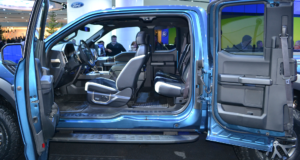You respond to a collision scene and find that a Honda got hit in a glancing, head-on collision along the passenger’s front fender. Upon arrival, the initial size-up leads responders to believe that the damage is not significant. The passenger’s front fender is crumpled and the hood has buckled a bit. Everything else on the car looks pretty much intact.
A closer look at the windshield on the far side however reveals an outward ‘bump’ in the glass on the driver’s side near the top of the windshield. This potentially changes things very significantly. Once patient contact is made with the driver, it may become evident that the seemingly minor crash can actually be a serious trauma event.
The injuries to the driver in this case were solely due to the fact that the driver was unbelted. His frontal airbag deployed as it should have but it was the collision momentum that propelled him forward, up and over the deployed airbag. That’s when his head impacted with the windshield up along the top edge, resulting in a serious facial and head injury.
Remember, a ‘spider web’ on the windshield on the passenger’s side can be caused by three things; 1) unrestrained occupant contact, 2) airbag deployment, or 3) a flying object inside the vehicle. A ‘spider web’ on the driver’s side of the windshield is different. It can only be caused by two things; 1) occupant contact as in this case, or 2) an unidentified flying object inside the vehicle striking the glass hard enough to crack it.
From the inside, it might even be possible to see strands of hair or even flesh or blood on the glass where the patient impacted it. Match what you see there with what you see on the patient’s face to confirm to the best of your ability what has happened.
 University of Extrication Ron Moore's University of Extrication is the online home for training tips, news and information pertaining to vehicle extrication and rescue.
University of Extrication Ron Moore's University of Extrication is the online home for training tips, news and information pertaining to vehicle extrication and rescue.






